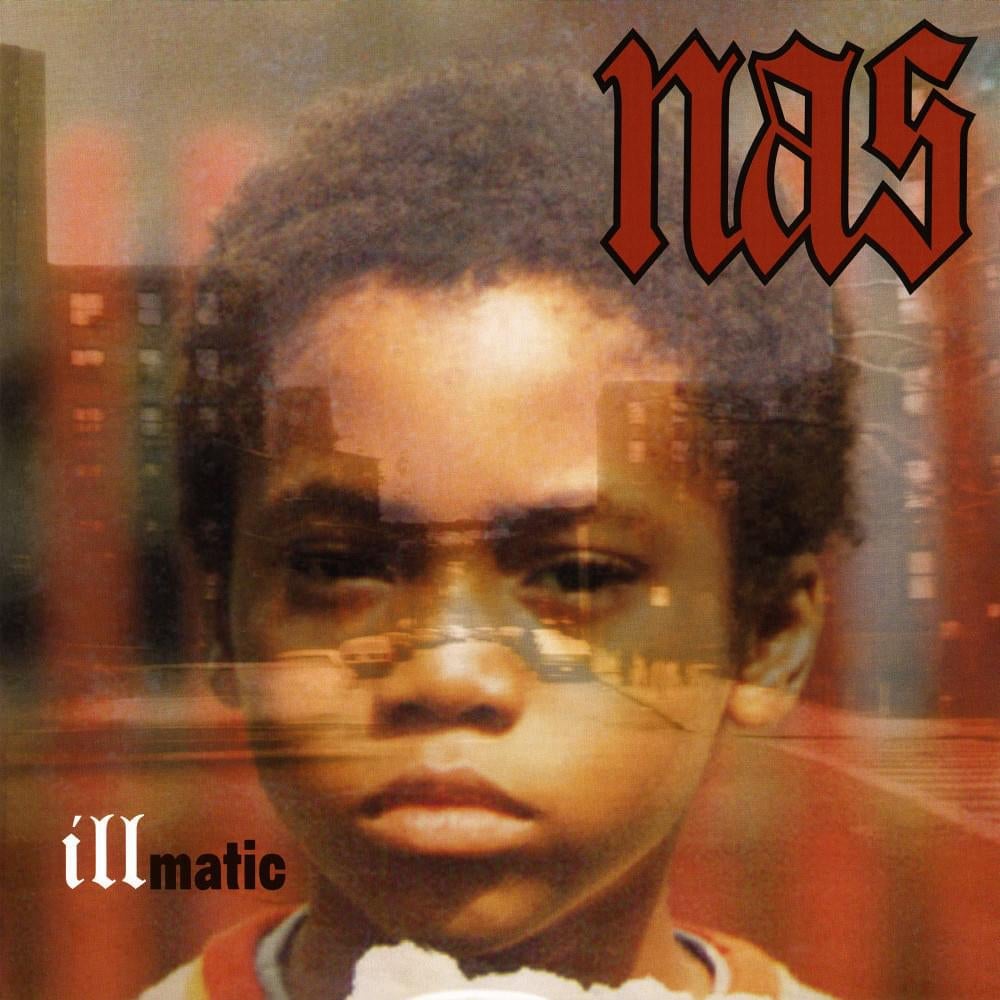Illmatic by Nas turns 25: How the New York rapper created the urban masterpiece that left an indelible mark on music
As one of the greatest hip-hop albums of all time celebrates its 25th anniversary, Roisin O'Connor writes about its origins, the impact it had and continues to have on music today, and why no other record captures the spirit of New York quite so well


Your support helps us to tell the story
From reproductive rights to climate change to Big Tech, The Independent is on the ground when the story is developing. Whether it's investigating the financials of Elon Musk's pro-Trump PAC or producing our latest documentary, 'The A Word', which shines a light on the American women fighting for reproductive rights, we know how important it is to parse out the facts from the messaging.
At such a critical moment in US history, we need reporters on the ground. Your donation allows us to keep sending journalists to speak to both sides of the story.
The Independent is trusted by Americans across the entire political spectrum. And unlike many other quality news outlets, we choose not to lock Americans out of our reporting and analysis with paywalls. We believe quality journalism should be available to everyone, paid for by those who can afford it.
Your support makes all the difference.Twenty-five years ago today, a young rapper called Nas released the definitive New York album. Yes, there are those who’ll say the city has never sounded better than on The Strokes’ seminal debut Is This It?, which rewired rock ‘n’ roll with its its mix of urgent guitars and arty insouciance. And yes, other will rhapsodise about The Freewheelin’ Bob Dylan, LCD Soundsystem’s Sounds of Silver and Notorious BIG’s Ready to Die. But, really, there is no album as quintessentially New York as Illmatic, through which the 20-year-old Nas asserted himself as the Charles Dickens of the hip-hop world, rapping about streets that pulse with life, as death lurks around every corner. He is a beat poet in the most literal sense – introducing listeners to a world they might not have otherwise known.
He lays down the gauntlet from the opening verse, where you hear the worn-out rattle of the train overhead – the F Line, covered in neon graffiti scrawls and crawling with every walk of New York life. Next stop: Queensbridge, 1994. The largest projects in America, where Nas was raised and where its several thousand residents lived day by day, in the shadow of the “Big Alice” power plant and across from the murky waters of the East River. Nas explained this scene to The Source in the same month of Illmatic’s release: “When I was a kid I just stayed in the projects… that s**t is like a city. Everybody’s mentality revolves around the projects. Everybody’s gotta eat. It’s just the attitude out there, it’s just life. You can’t be no sucker.”
On “The Genesis”, he announces himself as the “street’s disciple”, pulling dialogue from the 1983 hip-hop movie Wildstyle, before flipping to a sample of its soundtrack, “The Subway Theme”. Then he barrels into the opening salvo of “NY State of Mind” – “Straight out the f**kin’ dungeons of rap/ Where fake ni**as don’t make it back”, narrating his hustle and the dreams that drive it. For almost five minutes, he’s navigating the block, dodging bullets, running from the cops – all over a menacing chop of the piano from American jazz musician Joe Chamber’s 1977 track “Mind Rain”. It’s the danger that he lives and breathes that makes this album so thrilling, even today, reminding you: “Any day can be your last in the jungle.”
It was a level of expression like nothing that had been heard in hip hop before. Even the economy of it – at 10 tracks and a 40-minute running time – was rare for the era and even more so now, where far too many artists seem so compelled by the double album (*cough, Drake). “Lyrically, the whole s**t is on point,” Hot 97’s Miss Info (formerly known as Shortie) wrote in her review for The Source. “Never too abstract, never superficial.” Every line is delivered like a mantra, no word goes to waste.
It’s interesting that the person the album’s title pays tribute to is never mentioned explicitly in the lyrics. Nas’s best friend Ill Will, with whom he first collaborated using a mic and turntables, was shot in Queensbridge during a drunken fight, and rushed to hospital by Nas and his injured brother Jungle. They watched him die there. His spirit lingers in the spins and scratches of “Memory Lane” where Nas wanders reflectively, and on the more assertive “One Love”, where he watches from the shadows on a sweltering summer’s day in New York.
“A lot was happening in the five boroughs,” Q-Tip, who made his sole Illmatic contribution by producing “One Love” and its vibraphone-based beat, recalled to the podcast Drink Champs in 2017. “We’re talking about New York City ’93, right? That was the hottest year in recorded history: murder, crime, it was crazy. N***as was gettin’ left right where they stood, left and right, my n***a. We still livin’ in the hood! So we right around the way; we got our own lil’ fort. We got our own s**t happening right there.”
With four other producers on Illmatic, Nas changed the game for how artists approached the album. Before then, records across all genres were pretty much all created between the artist and one producer. With Illmatic, however, Nas had his vision, and he knew which producers would help him see it through: Pete Rock, Q-Tip, DJ Premier, Large Professor, and LES. This approach had such a lasting impact on the music industry, where multiple producers on one song – let-alone one album – is now the norm, that it prompted Complex in 2013 to accuse Nas of “ruining hip hop”.
“It gave rise to the idea that rap albums would be better served with multiple producers,” writer Isanuel Ahmed argued. “That lead to an overall decline in the cohesion and quality of rap albums and ushered in the era of superproducers.”
“I really think that’s the worst thing for albums ever,” No ID, the main producer behind Nas’s 11th studio album Life Is Good, said in the same article. “If you look before the Nineties, you might not find many, if any, albums with multiple producers. It just didn’t exist in the history of music. That would have been like Michael Jackson telling Quincy Jones, ‘Look man, I know we did well on Off the Wall, but I’m hot now, and I need to see some other producers for Thriller.’ It just doesn’t make sense.”
Enjoy unlimited access to 100 million ad-free songs and podcasts with Amazon Music
Sign up now for a 4 month free trial (3 months for non-Prime members)
Enjoy unlimited access to 100 million ad-free songs and podcasts with Amazon Music
Sign up now for a 4 month free trial (3 months for non-Prime members)
Such is the near-mythical status of Illmatic that Nas has struggled to release anything to equal it, prompting Jay-Z to claim that the rapper made “one hot album every 10 year average”. But it is impossible to understate the indelible mark Illmatic left on hip hop both then and in 2019, where Nas continues to influence new generations of rappers.
“I mirrored so much of my style in my earlier days around Nas and Illmatic,” Vic Mensa told Clash for the album’s 20th anniversary in 2014. “I was really trying to rap like that. I used to print out pages of Nas raps and imitate them, count the syllables and bar structures and make clone raps. Same flows, but just different words.”
“You hear it in my music what’s surrounded me, and just to be able to elevate your mind a little bit further past that through writing is bigger than one song,” Kendrick Lamar told BET. “In order to do that and craft that, it’s on another plane, and I wouldn’t have been able to do that if it wasn’t for that album [Illmatic], truthfully.”
“Twenty-five years ago, I was five — little did I know a classic hip-hop album was being birthed a world away over in New York City,” says Joseph “JP” Patterson, editor at Trench and Complex magazines.
“Later on in life, like with most albums before our time or understanding, I did my research and Nas’ Illmatic gripped me instantly with its boom-bap beats and lyrics from a “New York state of mind”. One of my favourites from the album, ‘The World Is Yours’, is still a ‘play anytime, anywhere’ tune that lifts the spirit and gives you a little bit of hope for tomorrow. Nas’s deft lyricism on Illmatic — his debut album! — set the bar high for rap music then and now.”
Even West Coast rap legends, who once shared a fierce and occasionally deadly rivalry with the MCs of the East Coast, would not shy away from acknowledging Illmatic’s place in the cultural zeitgeist.
“Nas looked into the future,” Cypress Hill’s DJ Muggs told me earlier this year. “When I first heard ‘NY State of Mind’ and ‘Life’s a Bitch’ I was like… this s**t is ridiculous. It’s an urban masterpiece, this legendary work of art. You’re sitting there on the f***ing bench with him. He’s that kind of vivid storyteller that when he wants to draw you into his world, you’re in it.”
Join our commenting forum
Join thought-provoking conversations, follow other Independent readers and see their replies
Comments